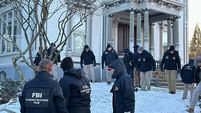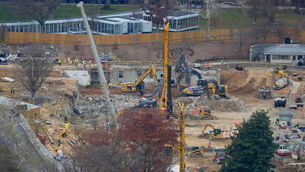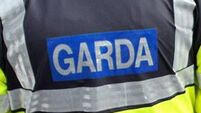Survivors’ food and water worries begin to mount one week on
With no water or electricity and scant food, survivors keep each other company at one of three emergency shelters on the outskirts of what remains of the town. “You can’t wash your hands or face,” says 72-year-old Katsu Sawayama, seated in the middle of the high school gymnasium, the biggest of the shelters in a town where more than half the 17,000 residents are still missing.
While international attention has been focused on Japan’s efforts to stop damage at a quake-hit nuclear power plant from spiralling out of control, a massive salvage and rescue operation has slowly been gathering steam.
Scores of villages and towns lining Japan’s northeast coast were flattened by the tsunami that rolled in minutes after Friday’s 9.0 magnitude earthquake.
While the official death toll stands at less than 5,000, thousands more are listed as missing and the final tally is likely to soar.
About 850,000 households in the north are still without electricity, while the government said at least 1.5 million households lack running water.
“There are some cases of dehydration,” said Eric Ouannes, general director for Médecins Sans Frontières in Japan, after he visited shelters in northern Miyagi and Iwate prefectures.
“We are seeing very small health problems but these can deteriorate. We have been restarting treatment for elderly people who have hypertension, diabetes and cardiovascular problems,” he added.
Meals for the earthquake-hit survivors barely sustain them — half a rice ball and a small bowl of miso soup is a luxury; a slice of bread might have to feed a family of three.
“Whatever they give us, we just gratefully receive. At least they’re feeding us three times a day,” said Sayawama.
International experts say that panic over fears of radiation leaks from the Fukushima nuclear plant could detract from problems likely to affect survivors of the quake and tsunami, such as the cold, access to clean water and getting enough food.
“People are getting so concerned about what are at the moment pretty low levels of radiation,” said Dr Richard Wakeford of Britain’s University of Manchester. “But the real problems... are in dealing with the earthquake and the tsunami.
“If this was a developing country, we’d have people going down in their hundreds and thousands with the likes of typhoid and cholera by now. The questions should be: Where is the sewage going? What is the state of the drinking water? If I were a public health official, that would be my principle concern.”
Ayumi Yamazaki, 21, is worried her one-year-old daughter is not getting enough to eat.
“We rarely get to eat rice, so I’m a little concerned,” she said. “But it’s better than not eating at all.”
There are fears that the food will run out soon. But outside help is slowly and sparingly arriving. A Self Defence Forces truck carrying a fresh supply of water arrived on Wednesday and two Red Cross teams arrived for the first time to treat patients.













